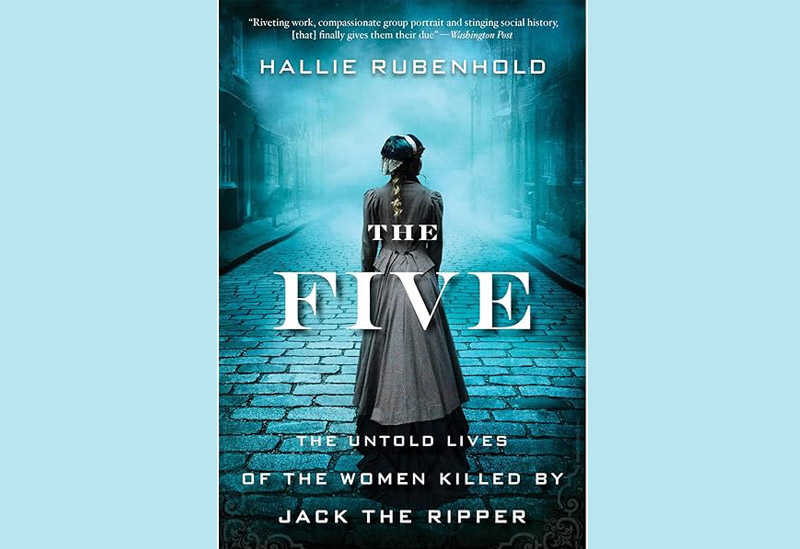Book review: The Five by Hallie Rubenhold
By Philippa Tracy
Hallie Rubenhold’s book The Five is the story of the ‘canonical five’ victims of Jack the Ripper: Mary Ann or ‘Polly’ Nichols, Annie Chapman, Elizabeth Stride, Catherine Eddowes and Mary Jane Kelly. All five were brutally murdered in London, between August 31 and November 9, 1888. This book does not explore who the killer was, or may have been, or the details of his appalling crimes. Instead, it is, unusually, about the women themselves. It is what Rubenhold describes as an attempt to give these women a voice and “give back to them that which was so brutally taken away with their lives: their dignity.”
Very little remains of the police records of the murder investigations and the official records of the coroners’ inquests. The author relies on what evidence there is from these records, as well as workhouse archives, parish records and contemporary journalism, filled with “embellishment, invention and ‘fake news’.” Newspapers had to keep up with the ever-growing and insatiable demand for “more content and better angles.” In the year following Queen Victoria’s Golden Jubilee, and months of social unrest because of the Long Depression, there was a new story, the “brutality of the Whitechapel murders stunned London and most of the newspaper-reading world.”
Rubenhold’s book is part historical detective and part social commentary, an attempt to address the misogyny at the heart of the Ripper myth. Life was tough for the working classes, and particularly for working-class women. They “had no voice and few rights.” Many relied on prostitution as a main source of income, although there is no evidence that three of these women were ever prostitutes. They were poor, and they were unfortunately asleep on the streets, when they became victims of the Ripper. Only Mary Jane Kelly was killed in her bed. They were all living and working in one of the most overcrowded, deprived and desperate areas of East London.
This book tries to answer the obvious questions readers may have today about how and why these women ended up in the desperate situation they found themselves in. What choices did they have for work, birth control, or when a marriage broke down? And what made them such easy prey for the Ripper? What assumptions did the police make about the women, which subsequently informed the direction of the investigation? And although more than 2,000 were interviewed, and more than 300 “investigated as possible suspects,” the killer was never found.
This is a tragic story of how cheap working-class women’s lives were in Victorian London. Women were conditioned to accept “perpetual childbearing,” various forms of drudgery as work, domestic violence, moral judgement and limited life choices. It has been established that Jack the Ripper did not have sex with his victims. But, Rubenhold believes he did target them while they slept. What these women have in common is a history of poverty, homelessness and alcohol dependency, coupled with a tragic personal story. The first victim, Polly, “was just another impoverished, ageing, worthless female resident of a Whitechapel lodging house. There was nothing else the police, the coroner, the newspaper scribblers or their readers needed to learn about her.” Finally, someone has bothered to tell their story.







Click here to change your cookie preferences